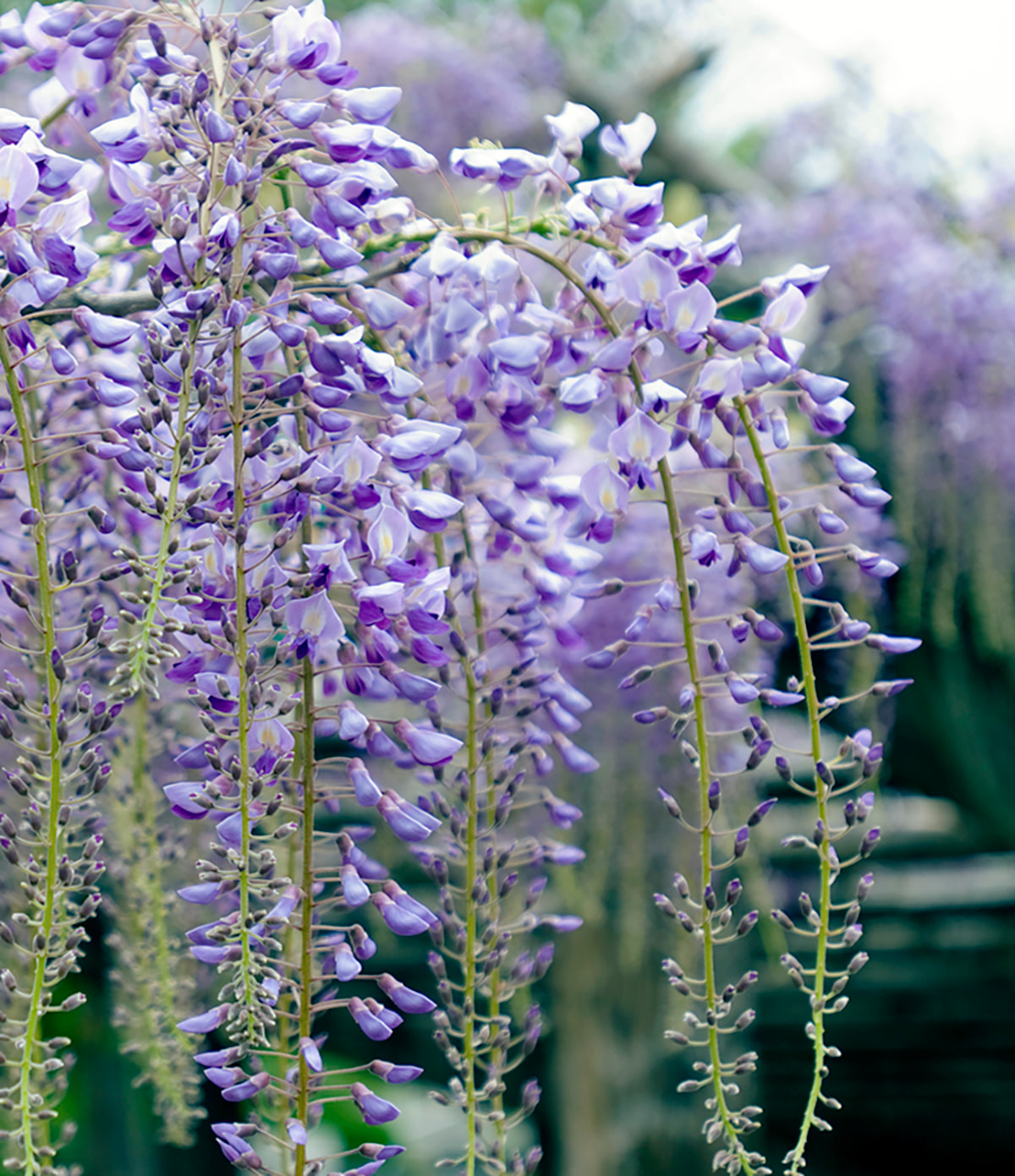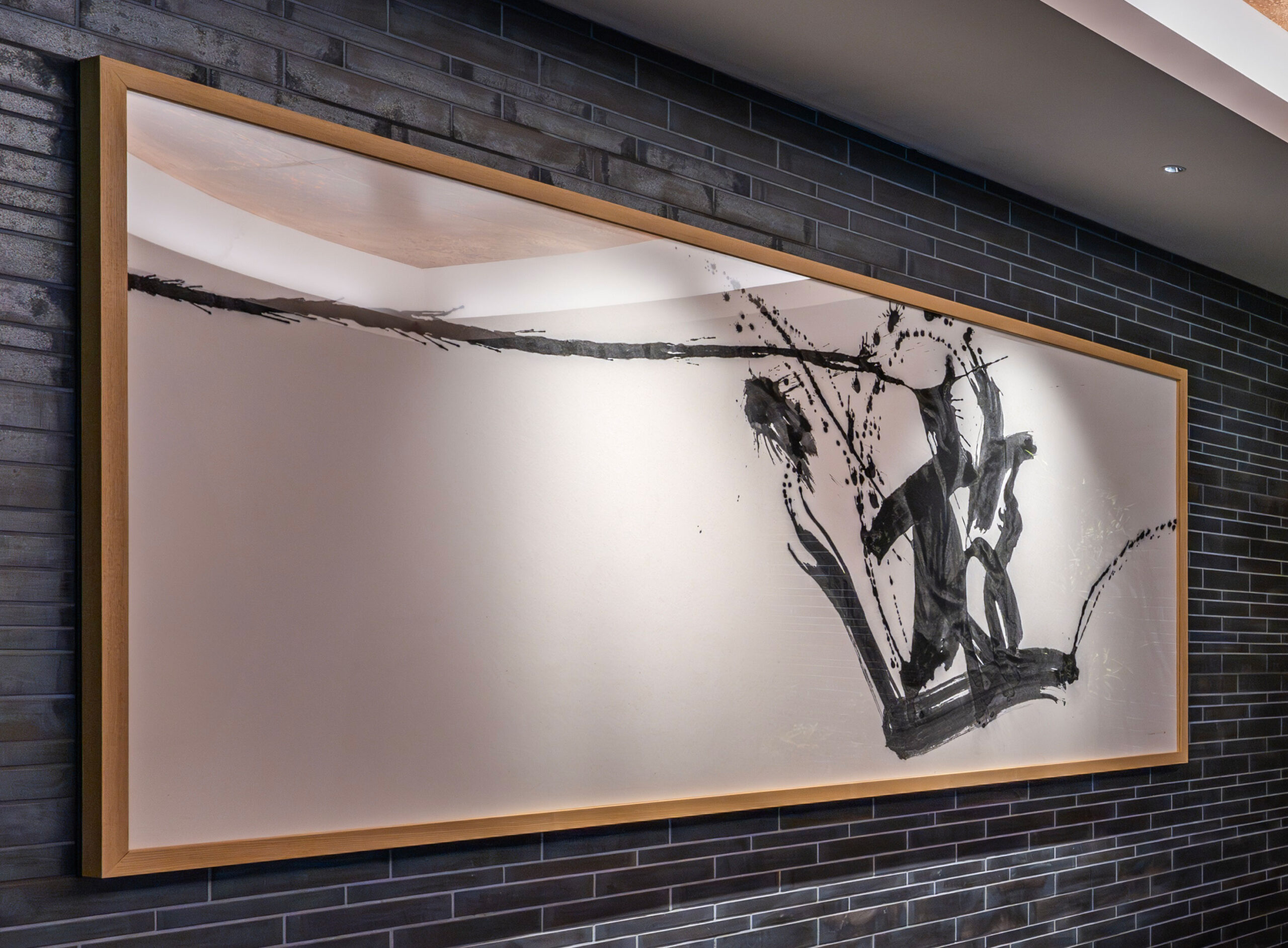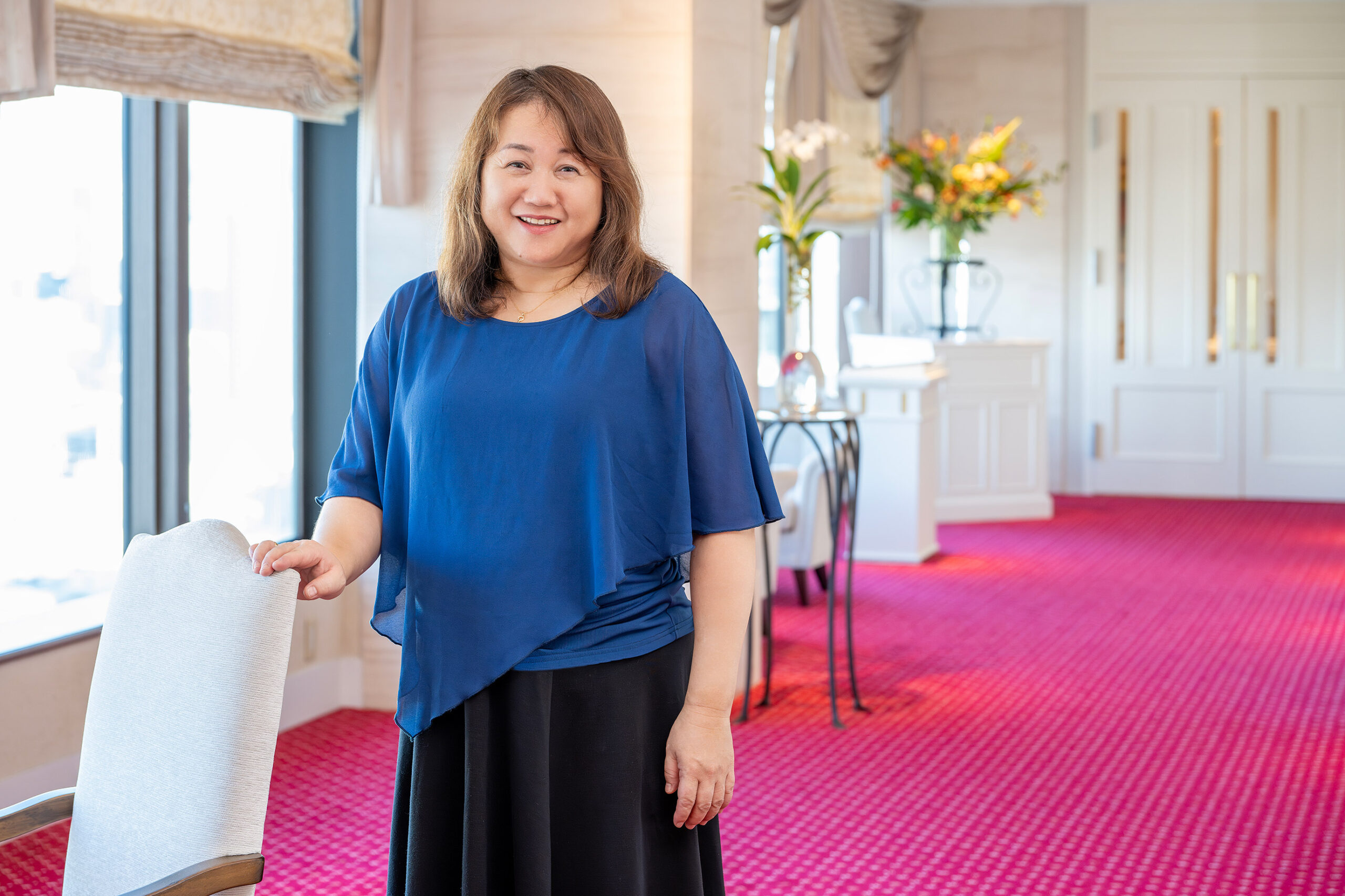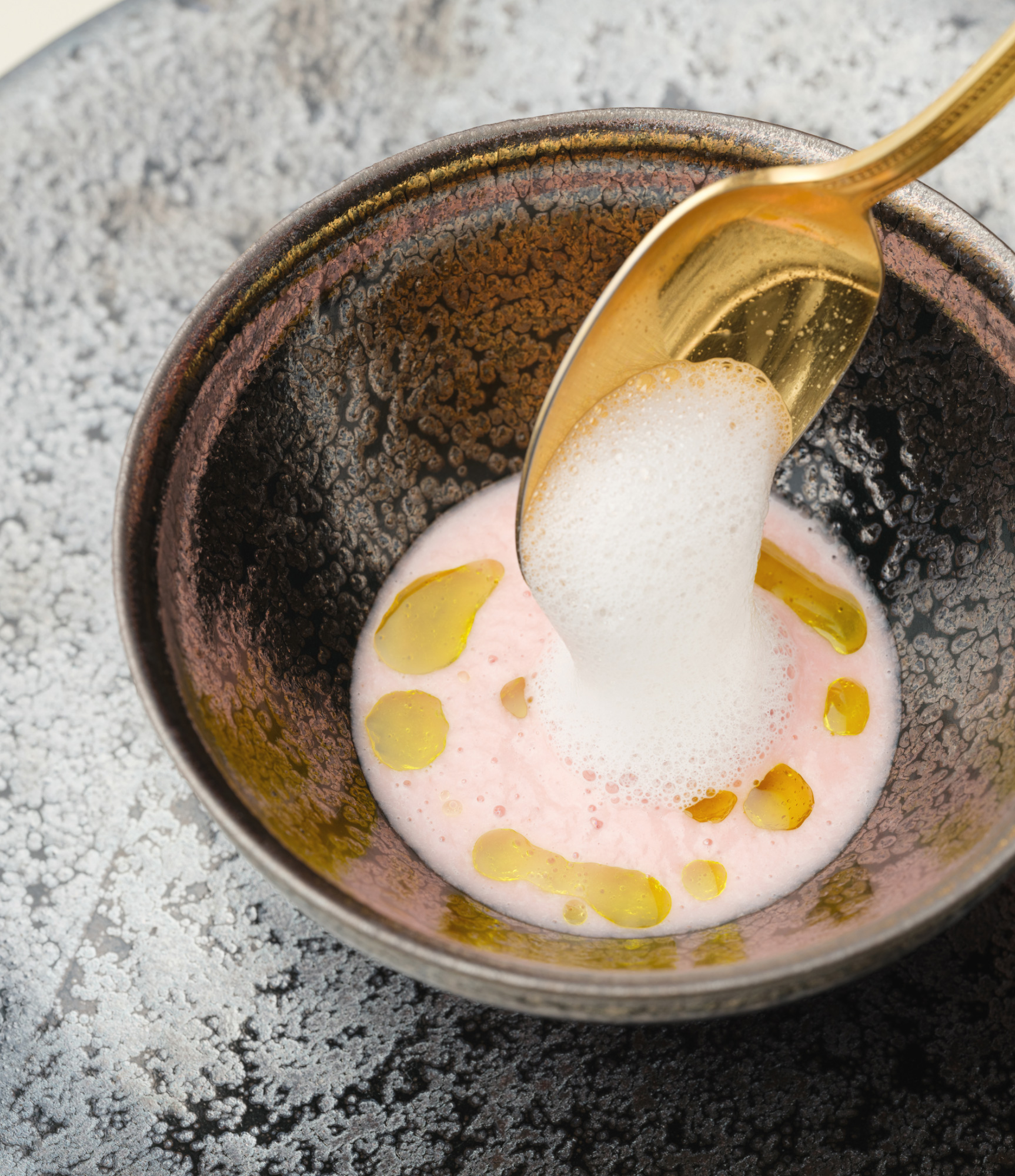
Kamigyo~Higashiyama, Kyoto
Finding the Best Supporting Actors for Cooking
This article was originally published in the Fall/Winter 2021-2022 issue of The ROYAL.
All products, services, and prices are subject to change.
An Excursion from RIHGA Royal Hotel Kyoto and RIHGA Gran Kyoto
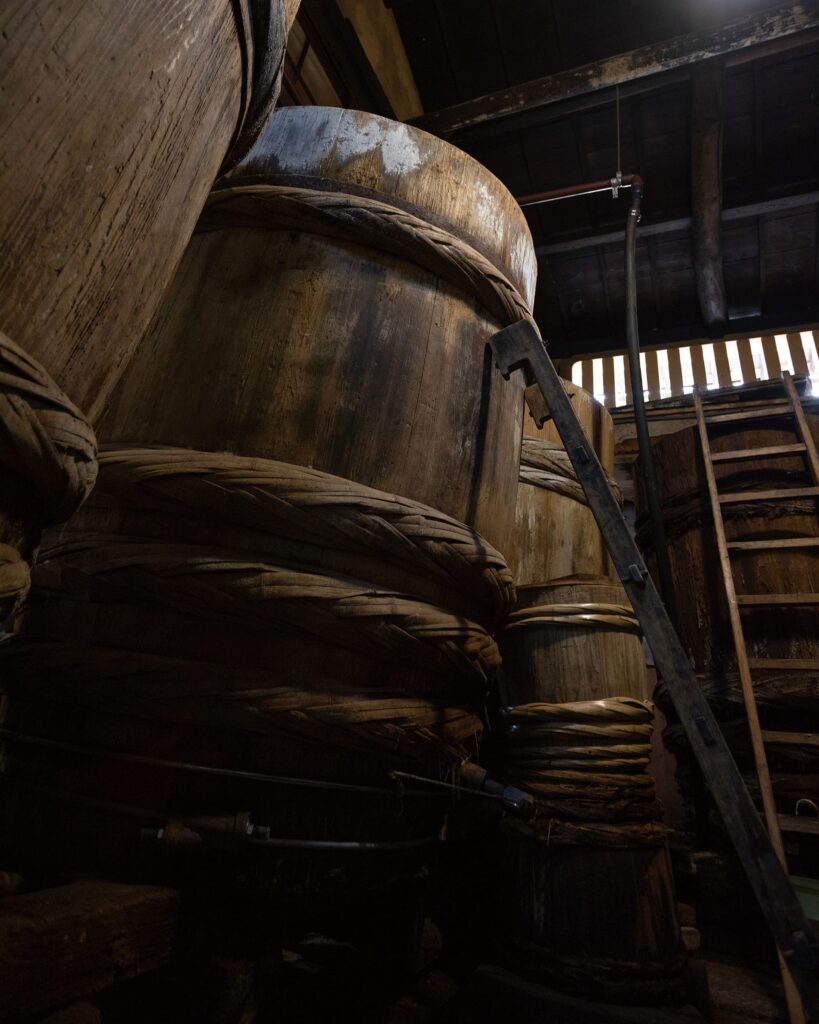
Sawai Shoyu Honten
Traditional Japanese cuisine is listed as an Intangible Cultural Heritage, and its roots can be traced back to Kyoto’s Chakaiseki (a meal served before a tea ceremony) and Shojin Ryori (Buddhist cuisine). As the birthplace of Japanese cuisine, Kyoto is home to numerous shops with rich histories, offering a variety of seasonings like soy sauce, Miso (soybean paste), vinegar, and others necessary to bring out the natural colors and flavors of the ingredients. Let’s walk through the streets of Kyoto with Sugimoto Kyoko, a Kyoto-based writer, to explore Kyoto’s flavors and history.
Photography by Yoshida Akihito
Kyoto Seasonings, the “Guardian Gods” of My Kitchen
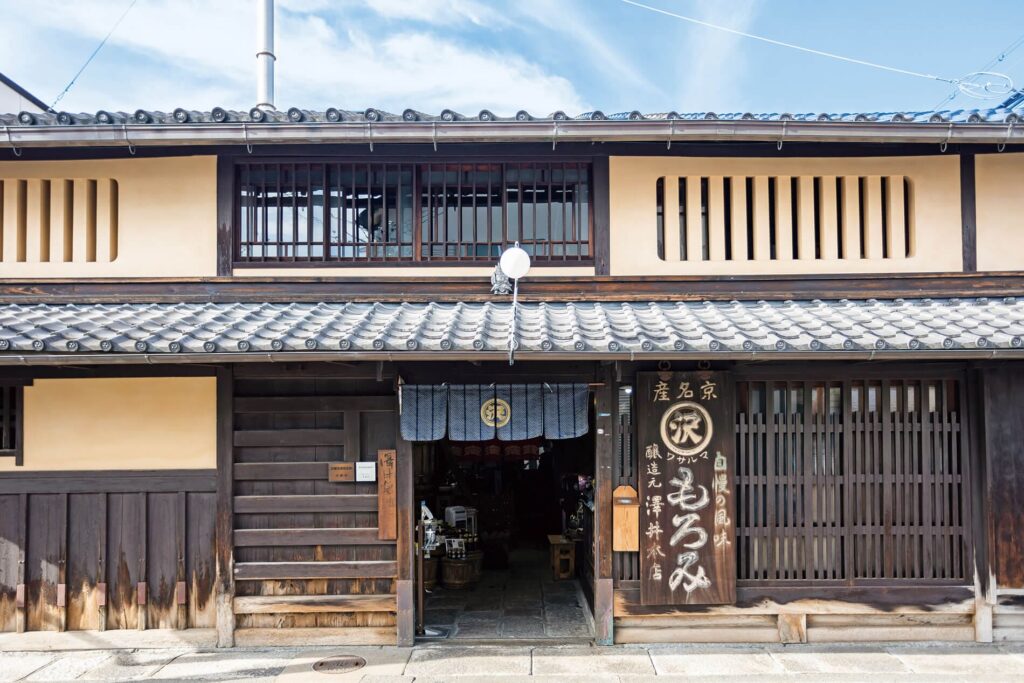
Sawai Shoyu Honten
Founded in 1879. Sawai Shoyu Honten’s store building is a traditional Kyoto merchant house composed of Machiya (a wooden townhouse) with Mushikomado (a window with a lattice) and a white-walled earthen storehouse, Dozo.
Although I am not someone who is confident in their cooking skills, I have my own kitchen philosophy. “With good Dasi (soup stock) and seasonings, your dishes will come out 50% better than you might expect.” And because I prefer light flavors, I rely heavily on seasonings from Kyoto. Since the start of COVID-19, when I started to cook more at home, Miso, soy sauce, and vinegar from Kyoto have been playing a major role in my home cooking. To express my gratitude to my favorite Kyoto seasonings, I decided to make a pilgrimage to the home of the “guardian gods” of my kitchen.
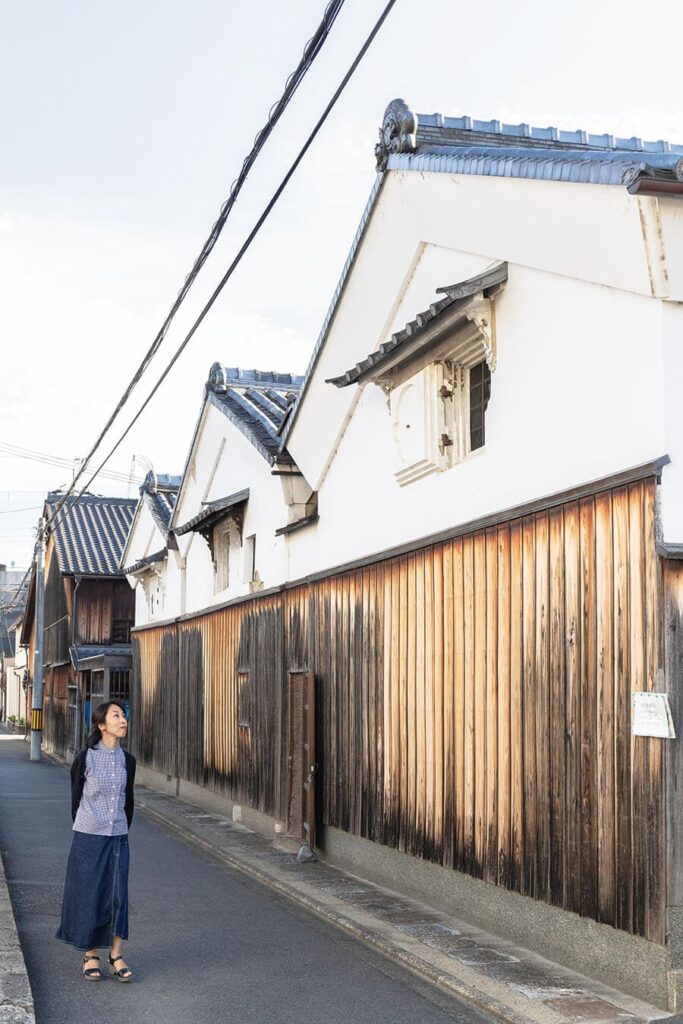

The photo on the right shows the apple-shaped soy sauce bottles, available only at the main store. You can get either sashimi soy sauce or double-brewed soy sauce in them. You can also get your hands on “Marusawa soy sauce for Kyoto cuisine” (available in various sizes), a must-have for any Japanese dishes, and “Kyo Moromi,” which is perfect for Morokyu (cucumber with Moromi) and goes well with alcoholic beverages.
Passing the Kyoto Tower standing proudly in the clear sky, I took the Karasuma Subway Line to Marutamachi Station. Heading north on Shinmachi-dori, the large white-walled Dozo, an earthen storehouse, of the “Sawai Shoyu Honten” came into view. The building is an old-fashioned merchant house, which is now a rare sight even in Kyoto. It is composed of a factory where artisans work and a store connected together. I admired the impressive roof of Dozo as I walked into the main entrance with a signboard that read “Moromi.” Once I passed the Noren curtain, I was hit with the aroma of Moromi (a mash of unmatured soy sauce), which tickled my appetite. Looking at the large cedar barrels sitting side by side made me want to join my hands and say, “Thank you for all you do.” I bought my usual “Marusawa light soy sauce for Kyoto cuisine,” and as a souvenir, I also picked up some “apple-shaped soy sauce bottles,” which are available only at the main store, from a variety of soy sauce bottle designs they offer.
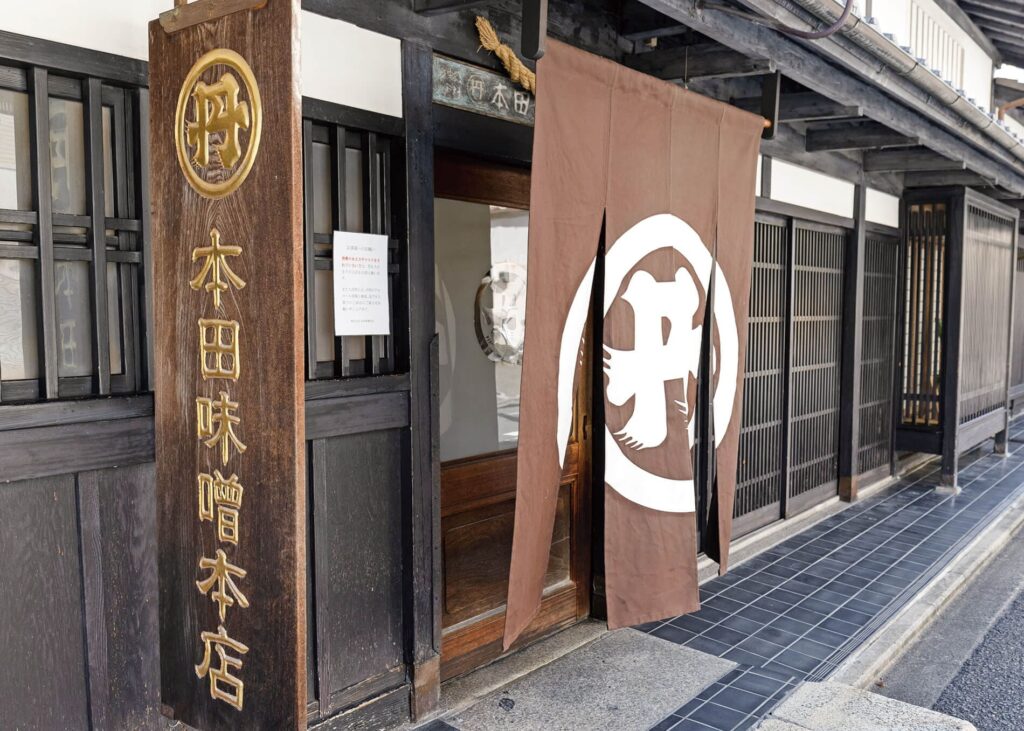
Honda Miso Honten
Founded in 1830. Honda Miso Honten has been a purveyor to the Imperial Court for a long time since its founder, Tambaya Mosuke, a Tamba toji (a master sake brewer of Tamba), started to offer Miso to the court after his skills in making Koji (rice malt) got recognized by the court.


Their signature product, “Saikyo Shiromiso” (¥648/500g, ¥486/300g) (left), makes you sigh with its fine smoothness. Its beautiful color and mild sweetness were nurtured by the gorgeous culture of Kyoto.
After that, I went to the “Honda Miso Honten” on Muromachi-dori. The majestic storefront tells its long history as a purveyor to the Imperial Court. Miso is a typical Japanese preserved food. However, Kyoto’s white Miso is more sophisticated because it has been influenced by the glamorous cultures of Yusoku Ryori (a banquet meal for the Emperor and members of the court), Chakaiseki (a meal served before a tea ceremony), and Shojin Ryori (Buddhist cuisine) served at Zen temples. Because of the lavish use of Koji mold, the taste is sweet, mild, and not too salty. “Saikyo Shiromiso,” especially, is as smooth as silk on the tongue. The beautiful white color spreads the moment you dissolve it in soup stock, and it brings out the colors of the condiments on top! The taste of Kyoto is beautiful to both the eye and the tongue.
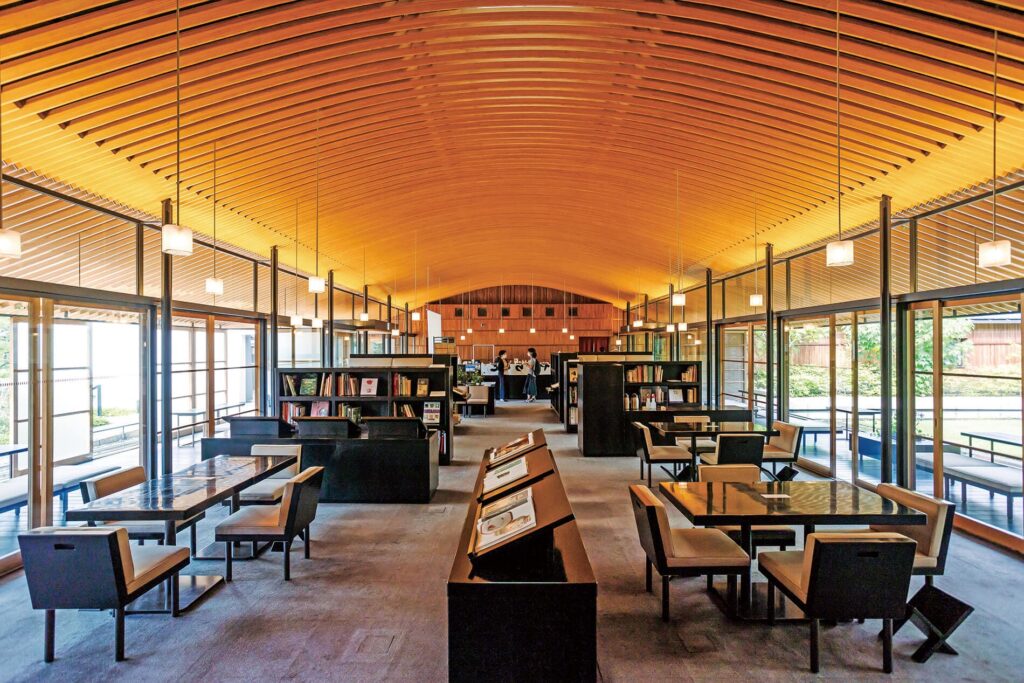
Toraya Karyo Kyoto Ichijo
You can enjoy tea and sweets at the founding place of Toraya, a confectionery that has been a purveyor to the Imperial Court for five centuries since the reign of Emperor Goyozei (1586–1611). You can relax both on the terrace overlooking the courtyard and inside the expansive store.


The picture on the left is the “Anmitsu” (¥1,320), which consists of agar and colorful Kohakukan (crystal candies) topped with red bean paste made from the same red beans used for Toraya’s Yokan and seasonal honey-soaked fruits.
My arms were getting tired from carrying many bags, so I decided to take a break at the “Toraya Karyo” across the street. This is the site where Toraya, a confectionery that has been a purveyor to the Imperial Court since the Muromachi period (1336–1573), was founded. Even the store and garden designed by Naito Hiroshi, one of Japan’s leading architects, are well worth a visit. The high Yoshinosugi cedar ceilings with arches naturally connect the inside and the outside, creating a sense of openness. On the bookshelves are approximately 600 books on Kyoto, architecture, art, and other subjects. You can use all your five senses to enjoy the scenery reflected in the water in the garden and feel the culture that has been passed down here in Kyoto. Their Anmitsu (a traditional Japanese dessert) soothed my tired body. The slightly sweet red bean paste made by Toraya is one of the signature flavors of Kyoto. Shall I stay here for a while and read a book on the bookshelf? Or should I go for a walk in Kyoto Gyoen, where the autumn leaves boast their beauty? Even the time spent pondering was one of the best parts of the trip.
【DATA】
Sawai Shoyu Honten
292, Nakano-cho, Shinmachi Nishiiru, Nakachojamachi-dori, Kamigyo-ku, Kyoto
Phone: +81(0) 75-441-2204
Opening Hours: 9:00~17:00 (Sundays and Holidays: 10:30~15:30)
Closed: Irregular days and the year-end and new-year holidays
Honda Miso Honten
558, Muromachi-dori Ichijo, Kamigyo-ku, Kyoto
Phone: +81(0) 75-441-1131
10:00~18:00
Closed: Sundays and the year-end and new-year holidays
Toraya Karyo Kyoto Ichijo
400, Hirohashidono-cho, Karasuma Nishiiru, Ichijo-dori, Kamigyo-ku, Kyoto
Phone: +81(0) 75-441-3113
10:00~18:00
Closed: New Year’s Day and the last Monday of each month (except for December)
Exploring Yasaka and Gion for Mellow Deliciousness
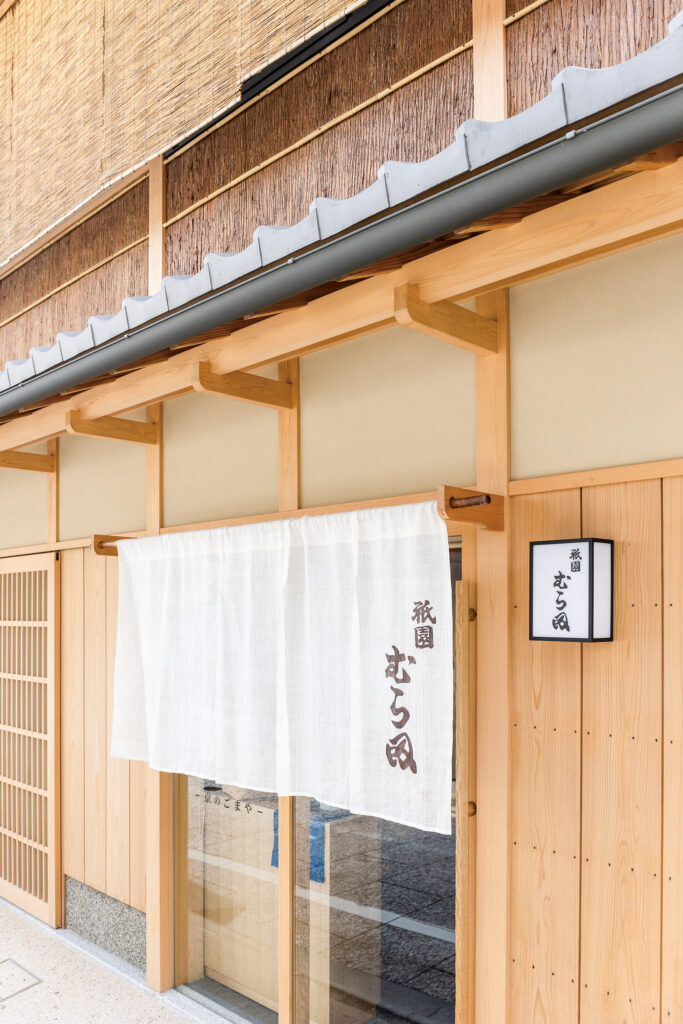
Kyoto sesame shop Gion Murata
Founded in 1920. Gion Murata is a long-established wholesaler of Kappo cuisine ingredients for Kyoto’s Ryotei (traditional Japanese restaurants), including Kikunoi. The store is located in an elegant area near the entrance of Ishibe Koji Alley.


Gion Murata offers roasted sesame seeds and kneaded sesame seed paste; both come in white and black sesame seeds. They also offer dried bonito flakes, chopped Nori seaweed, Furikake (rice seasoning), and Namafu (wheat gluten).
The area around Yasaka and Kiyomizu is very popular among tourists, but it is less crowded when you visit there first thing in the morning. Following the aroma of bonito flakes in the air, I arrived at the “Gion Murata.” In their brand-new store, you can find roasted sesame seeds and kneaded sesame seed paste; both come in white and black sesame seeds. The sesame seeds here are evenly roasted and brightly colored. When crushed, the sesame seeds get soft and moist, and the gorgeous aroma rises softly. It goes without saying that the sesame paste is perfect for sesame sauce, but it is also delightful when mixed with honey and spread on toast.

Murayama Zousu
Yuzen dyeing, which flourished after the Genroku period (1688–1744), is known to use vinegar to fix the color. Hence, Murayama Zousu, a vinegar shop, offers its products with labels that depict the Yuzen Nagashi (silk dyeing) of Kamogawa. At “Dining & Lounge KOTONA” at the RIHGA Gran Kyoto, you can enjoy pickles made using their Chidorisu.

From left to right: newly released Junmai Chidorisu (¥734/500 ml), Chidorisu (¥486/360 ml), and a stylish tabletop vinegar bottle, “CoChidor” (¥518/100 ml).
After going down the street of Yasaka and strolling through Gion, I headed to the “Murayama Zousu,” the brewer of “Chidorisu.” I must admit that it was this Chidorisu that awakened my interest in Kyoto seasonings. Its mild and gentle acidity and clean flavor are not only perfect for Japanese cuisine but also for pairing with white wine and olive oil. When you mix it with Honda Miso Honten’s “Saikyo Shiromiso,” you can make perfect Sumiso (vinegared Miso), and you can even turn cucumbers into a splendid dish just by dressing them with it. This fall, a new product, “Junmai Chidorisu,” will be released. It is a highly anticipated product, as it makes the most of the refreshing yet soft sweetness of Kinuhikari rice from Nantan City, Kyoto.


Kyoto Ebisu Shrine
Kyoto Ebisu Shrine was built in 1202 by Yousai Zenji, the founder of Kenninji Temple. Along with Nishinomiya Shrine in Hyogo and Imamiya Ebisu Shrine in Osaka, it is known as one of the “three major Ebisu shrines of Japan.” During the “Toka Ebisu Festival,” held every year from January 8 to 12, the shrine’s approach is lined with food stalls and is crowded with people who wish for prosperous business until late at night.
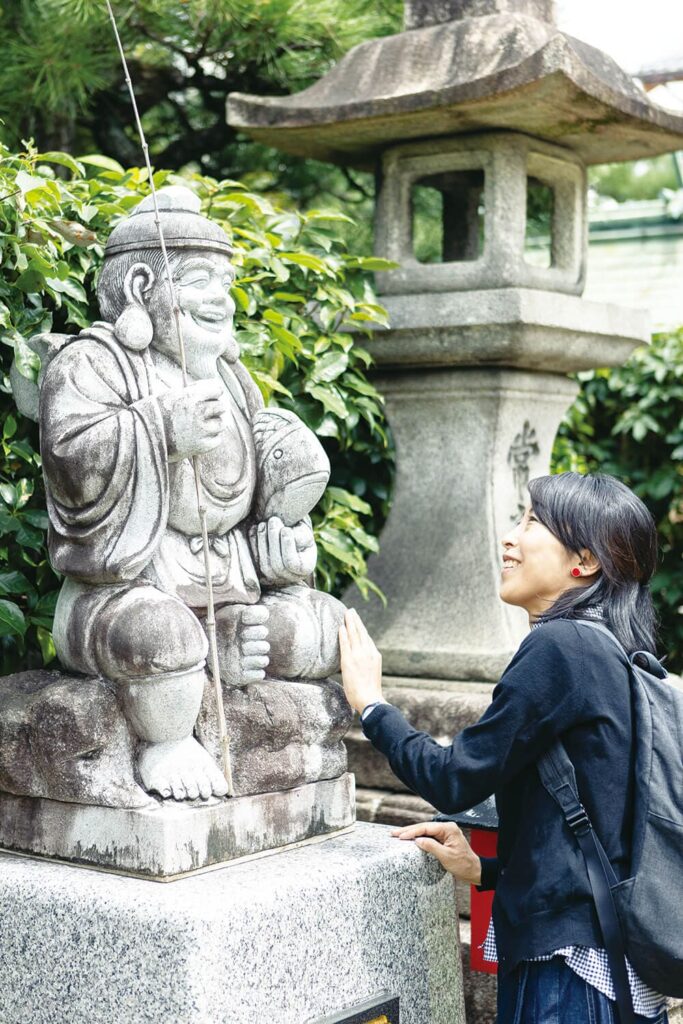

Some time ago, people started saying, “Ebisu is a very old god and deaf, so he will listen to your request only if you knock on the door as if you were tapping on his shoulder.”
I also dropped by the “Kyoto Ebisu Shrine.” Here, people knock on the wooden door next to the main shrine to pray again after praying at the main shrine. Wishing for the prosperity of the shops I visited on this trip, I carefully knocked on the wooden door.
【DATA】
Gion Murata
478, Shimogawara-cho, Shimogawara-dori, Higashiyama-ku, Kyoto
Phone: +81(0) 75-561-1498
10:00~17:30
Closed: Irregular Sundays, holidays, and Wednesdays, and the year-end and new-year holidays
Murayama Zousu
2-3, Sanjoohashi Higashiiru, Higashiyama-ku, Kyoto
Phone: +81(0) 75-761-3151
8:30~17:00
Closed: Sundays, holidays, and the year-end and new-year holidays
Kyoto Ebisu Shrine
125, Komatsu-cho, Higashiyama-ku, Kyoto
Phone: +81(0) 75-525-0005
9:00~17:00 (Goshuin stamps available until 16:30)
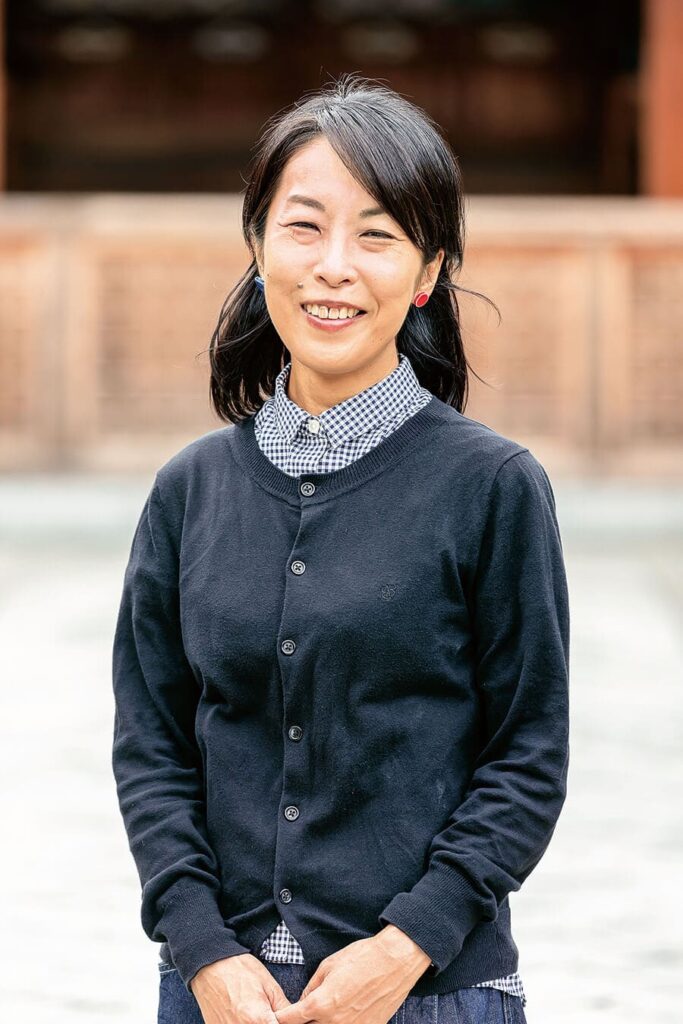
Sugimoto Kyoko is a freelance writer from Osaka and has lived in Kyoto for 25 years since she was a student. Although she is not much of a cook, she loves eating good food. She mainly writes interview articles on researchers, NPO representatives, business managers, religionists, etc. for various media. She is the author of “Kyodai-teki Bunka Jiten: Jiyu to Chaos no Seitai-kei,” published by Film Art, Inc.


